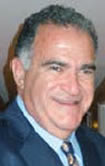"Warnings are most effective when they warn of a potential danger that is not generally obvious, and are least effective when they over advise. A warning is appropriate when it informs in a clear; concise; and unambiguous manner."
According to The New Merriam-Webster Dictionary (1989 edition) to warn is ... "(1) to put on guard; caution; also: admonish, counsel; (2) to notify (especially in advance); inform; (3) to order to go or keep away..."
In essence, to warn is to place someone on advance notice of a danger or a potential danger. To warn requires that the person or people giving the warning have a superior knowledge of the harm or potential harm compared to the person or people exposed. Further, the person or the people who are warning must also have a superior knowledge of the means of reducing either the likelihood and/or the magnitude of the harm or potential harm as compared with the person or people exposed.
Warnings can take many forms. Warnings can be visual such as the label on a can of hair spray warning that the contents of the can are flammable. Warnings can be audible such as a backup alarm on the rear of a trash truck warning pedestrians that the large truck is backing up. Warnings could be an odor. The odorant added to natural gas and to propane warns the consumer of the presence of the otherwise invisible and yet flammable gas.
Warnings could stimulate more than one human sense. Some Walk and Don't Walk pedestrian crosswalk signs not only flash a colored pictograph of a person walking or a hand telling you not to walk, they may also signal walk and don't walk by distinctive buzzer sounds. For example, the City of Santa Monica, California, advises the pedestrian through the use of audible alarms and buzzers. An audible alarm would, for example, allow a blind person or a Seeing Eye dog not to have to depend upon the sound of traffic to signal them to proceed.
Visual warnings can be expressed in a number of ways: as a pictograph, as a written instruction, or even as a flashing light. Sounds are a common form of warning. Backup alarms on trash trucks, horns on cars, and buzzers on smoke detectors are all different means of warning with sound. The examples just discussed demonstrate that warnings provide an important function - to advise people of a potential harm or danger and/or to instruct them on things they should (or should not) do in order to either eliminate their exposure to the potential harm or to minimize their exposure as much as practicable.
There must be a proper balance of what is warned against and what is not. For example, while it is reasonable to advise people that propane gas is both heavier than air and is flammable, it is not necessary to warn somebody not to stick their hand into a propane flame.
A warning is appropriate when it informs of a nonobvious risk. To inform means to convey useful information that is otherwise not obvious. The information might either suggest that a person should abstain from an activity (e.g., do not dive into shallow water) or should proceed with caution (e.g., drive carefully; road is slippery when wet).
A risk may not be obvious, for at least three reasons: when the
- Sequence of events is inadequately understood (e.g., propane gas can pool in a room instead of venting out of a window or a chimney);
- Magnitude of the danger is under appreciated (e.g., the rupture of a large dam could drown many thousands of people downstream);
- Likelihood of the risk is understated (e.g., the chance of an average driver driving a midsize car dying per year in a car crash is one in four thousand, and the chance of a driver who drives perhaps forty or fifty thousand miles per year in a subcompact car might be as high as one in a few hundred per year or perhaps a few percent over his or her lifetime).
A warning is also appropriate when it reinforces good behavior (e.g., remember to always wear your seatbelt).
It is not always obvious deciding when warnings would be helpful since the helpfulness of warnings will clearly depend on many environmental factors including:
- Nature of the potential threat or harm;
- Magnitude of the potential threat or harm;
- Recognition of the potential for harm by the person facing the threat;
- Alternative manners in which to address the potential threat;
- Value and effectiveness of the warning.
Warnings are most effective when:
- They are unambiguous (e.g., a stop sign at an intersection);
- They advise of a nonobvious potential harm or threat (e.g. specific parts of copying machines may be hot to the touch);
- Human perception of the potential harm is either impracticable or inaccurate (e.g., people cannot see radiation);
- They don't saturate with too much or too complex information (e.g., a red blinking light with a sign that says "do not enter");
- They are simple and easy to understand;
- They use pictorials and not words (e.g., see the pictographs in Figure 2);
- They demonstrate risk or harm, clearly and memorably (e.g. a pictograph of a person diving in shallow water with an indication that the diver hit his or her head).
Warnings are least effective when:
- They are already obvious, reasonable, and/or intuitive (e.g., people already know that an open flame can burn or a sharp knife can cut);
- They convey too much information; they saturate (e.g., a fine print, multiparagraph warning label written on the side of a hair spray can);
- Human perception is best (e.g., you do not need to warn adults not to run across a freeway);
- The observer tends to acclimate to warning (e.g., multiple and contradictory parking signs);
- Instructions are too complex;
- On a relative basis, the risk is already immeasurably small (e.g., you do not need to warn people about the dangers of being hit by meteorites).
In summary, the intent of a warning is both to advise of a future, potential danger as well as to offer advice on how best to reduce one's exposure to that danger. While it is reasonable to advise of certain specific dangers, it would be highly unreasonable to warn against every potential danger. Hence, there are some circumstances where warning is merited and other circumstances where it is not. What determines when you should warn and when you should not is simply determined by whether the warning is likely to do more good than harm.
Kenneth Alvin Solomon, PhD, PE, Post PhD is Chief Forensic Scientist at The Institute of Risk and Safety Analyses (www.irsa.us). His formal education includes a BS, MS, and PhD in Engineering and a Post PhD each from UCLA. (1971, 1971, 1974, and 1977, respectively). For the majority of his professional career he was a senior scientist at RAND (Santa Monica, CA) as well as faculty at the RAND Graduate School and Adjunct Professor at UCLA, USC, Naval Post Graduate School, and George Mason University. He served as a Professional Service Reserve with two police agencies and a Police and Safety Commission. Dr. Solomon and his staff are engaged in Forensic studies primarily concentrating in accident reconstruction, biomechanics, and x factors.
©Copyright - All Rights Reserved
DO NOT REPRODUCE WITHOUT WRITTEN PERMISSION BY AUTHOR.









